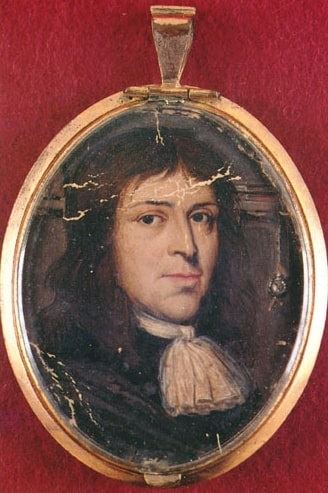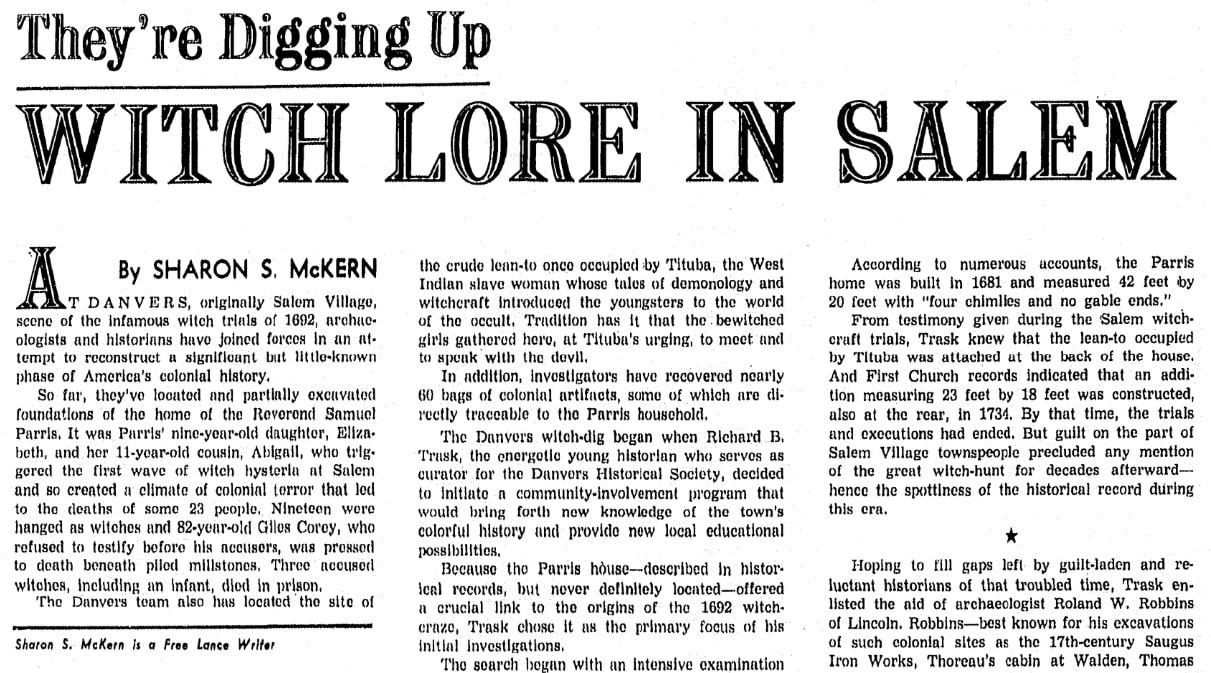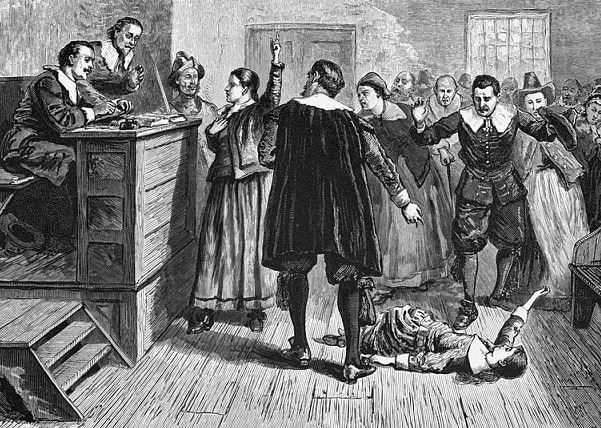Introduction: In this article, Melissa Davenport Berry writes about the archaeological dig exploring the Salem Witch Trials in present-day Danvers, Massachusetts. Melissa is a genealogist who has a blog, AnceStory Archives, and a Facebook group, New England Family Genealogy and History.
It has been 50 years since Richard B. Trask organized the big dig in Danvers, Massachusetts (originally Salem Village). The project’s goal was to excavate 300 years of buried history through the work of archaeologists, historians, and a legion of volunteers. The chosen spot was the home of Rev. Samuel Parris, the nest hive of the Salem witch hysteria of 1692.

I did some research to learn more about this, including articles in GenealogyBank’s Historical Newspaper Archives. For example, I found an article by Sharon S. McKern in the Boston Record American which detailed the project and its findings.

The Parris house was chosen because “it offered a critical link to the origins of the 1692 witch-craze.” It was in this home, during mid-winter of that year, that Parris’ 9-year-old daughter Elizabeth, and her 11-year-old cousin Abigail Williams (granddaughter of Roger Williams), were afflicted. Tituba, a West Indian slave woman owned by Samuel Parris, was accused of conjuring the devil through sorcery and occult magic, causing the girls to have hysterical fits.
As this article reported:
Prior to the excavation Trask, curator of the Danvers Historical Society, made a big dig into the archives.
After the trials and executions of 1692-1693, Salem Village wanted nothing more than to bury that dark period of its history. However, the young energetic Trask set out “to fill gaps left by guilt-laden and reluctant historians of that troubled time.” The stars lined up and a community project was launched.
Trask enlisted the aid of renowned archaeologist Roland W. Robbins and town manager Robert E. Curtis. Curtis, who caught Trask’s enthusiasm, authorized the use of Department of Public Works equipment, and backhoe operator Charles Cahill worked in unison with Robbins.
The location of the Parris house foundation was discovered in a field owned by Alfred Hutchinson, who permitted the excavation without fees. Hutchinson was descended from Rebecca Nurse, one of the women hanged in 1692 as a witch.
The project drew a crowd of photographers and the story got on record. What was discovered, beyond the foundation? For one thing, they found remnants of the crude lean-to once occupied by Tituba, along with numerous artifacts – nearly 60 bags full, some of which were directly traceable to the Parris household.
Among the artifacts was a fragment of a metal tray engraved with the initials “SPE,” indicating ownership by Rev. Samuel Parris and his wife Elizabeth (nee Noyes). Other treasures included gold coins dating from 1684, clay pipes, earthenware, buckles, food remnants, animal bones, 17th century window glass, brass spoons, silverware, oxen shoes, slipware pieces, portion of a lice-comb, and more than 250 whole bricks. These relics are catalogued and housed in Danvers.
Trask was amazed by the number of shattered beverage bottles unearthed from the site, which tells us that the Puritans – not nearly as prudish as history portrays them – were prodigious drinkers of wine and ale.
We owe a great deal to Trask and his team, who reconstructed a significant phase of American history.
Since the time of the big dig, Trask is considered one of the experts on all things relating to the Salem Witch Trials. He has appeared in Smithsonian and History Channel documentaries, consulted for both film (Three Sovereigns for Sarah) and print, and published on the subject. He currently is the head archivist at the Danvers Archival Center located at the Peabody Institute Library in Danvers, Massachusetts.
Stay tuned for more on Rev. Samuel Parris and Salem Village.
Further Reading and Videos:
- Trask, B. Richard. The Witchcraft Delusion: A Brief Guide.
- Trask, Richard B. “The Devil Hath Been Raised: A Documentary History of the Salem Village Witchcraft Outbreak of March 1692; Together with a Collection of Newly Located and Gathered Witchcraft Documents.”
- Trask, Richard B. “Digging up the Devil.” Yankee Magazine, 1972.
- Baker, Emerson W. A Storm of Witchcraft: The Salem Trials and the American Experience.
- Boyer, Paul & Stephen Nissenbaum. Salem Possessed: The Social Origins of Witchcraft.
- Goss, K. David. Daily Life During the Salem Witch Trials.
- Hansen, Chadwick. Witchcraft at Salem.
- Norton, Mary Beth. In the Devil’s Snare: The Salem Witchcraft Crisis of 1692.
- Roach, Marilynne K. The Salem Witch Trials: A Day-by-Day Chronicle of a Community under Siege.
- Rosenthal, Bernard, et. al. Records of the Salem Witch Hunt.
- Schiff, Stacy. The Witches: Salem, 1692.
- Starkey, Marion L. The Devil in Massachusetts.
- Upham, Charles W. Salem Witchcraft.
- Salem Witch Trial Records, University of Virginia
- Berry, Melissa D. “REVIEW: Family Relations Focus of New Book on Salem Witch Trials.”
- Gagnon, Dan. Specters of Salem Village
- Video: Salem Witch Trial Full Documentary, The Geographic Channel
- Video: Bewitchment in Salem: The Real Story with Richard Trask and Emerson Baker
- Video: Marilynne Roach, Six Women of Salem
- Video: Days of Judgement: Salem Witch Trials
- Video: Dark History Witches, History Channel
- Video: Salem Witch Trials – Haunted History Documentary
- Video: Salem Witch Hunt (Great documentary with Richard B. Trask, Marilyn Roach, and Katherine Howe, author of The Physick Book of Deliverance Dane.)
